Complete Google Ads cost analysis for medical practices by specialty. Real performance benchmarks, cost per click data, and budget recommendations for healthcare PPC advertising in 2025.
.jpeg)
Google Ads represents one of the most immediate yet complex patient acquisition channels for medical practices, offering the potential for rapid patient acquisition while requiring significant investment and specialized expertise to achieve sustainable results. Most healthcare professionals approach Google Ads with unrealistic expectations about costs and timelines, leading to disappointing results and wasted marketing budgets.
The healthcare Google Ads landscape has become increasingly competitive and expensive, with average cost per click rates rising 40-60% over the past three years while conversion rates have remained relatively stable. This trend requires medical practices to approach Google Ads strategically, with adequate budgets and professional management to compete effectively against established competitors and aggressive marketing agencies.
Understanding the true costs and realistic performance expectations for healthcare, Google Ads enables medical practices to budget appropriately while implementing campaigns that generate positive return on investment. This comprehensive analysis provides transparent cost data and performance benchmarks that help healthcare professionals make informed decisions about their Google Ads investments.
Average Cost Per Click by Medical Specialty
Primary care practices typically experience Google Ads costs of $3-$8 per click for general keywords, with more specific terms like "family doctor near me" or "primary care physician" commanding $5-$12 per click, depending on local competition levels. These costs represent significant increases from historical levels due to increased competition and market saturation.
Specialty practices face dramatically higher costs, with dermatology keywords averaging $8-$25 per click, plastic surgery terms reaching $15-$50+ per click, and competitive procedures like LASIK or cosmetic dentistry commanding $20-$80 per click. These elevated costs reflect the higher patient lifetime value and profit margins associated with specialty procedures.
Emergency and urgent care keywords typically cost $4-$15 per click, with higher costs during peak demand periods and in competitive urban markets. The immediate nature of urgent care needs often justifies higher advertising costs due to reduced patient shopping behavior and higher conversion rates.
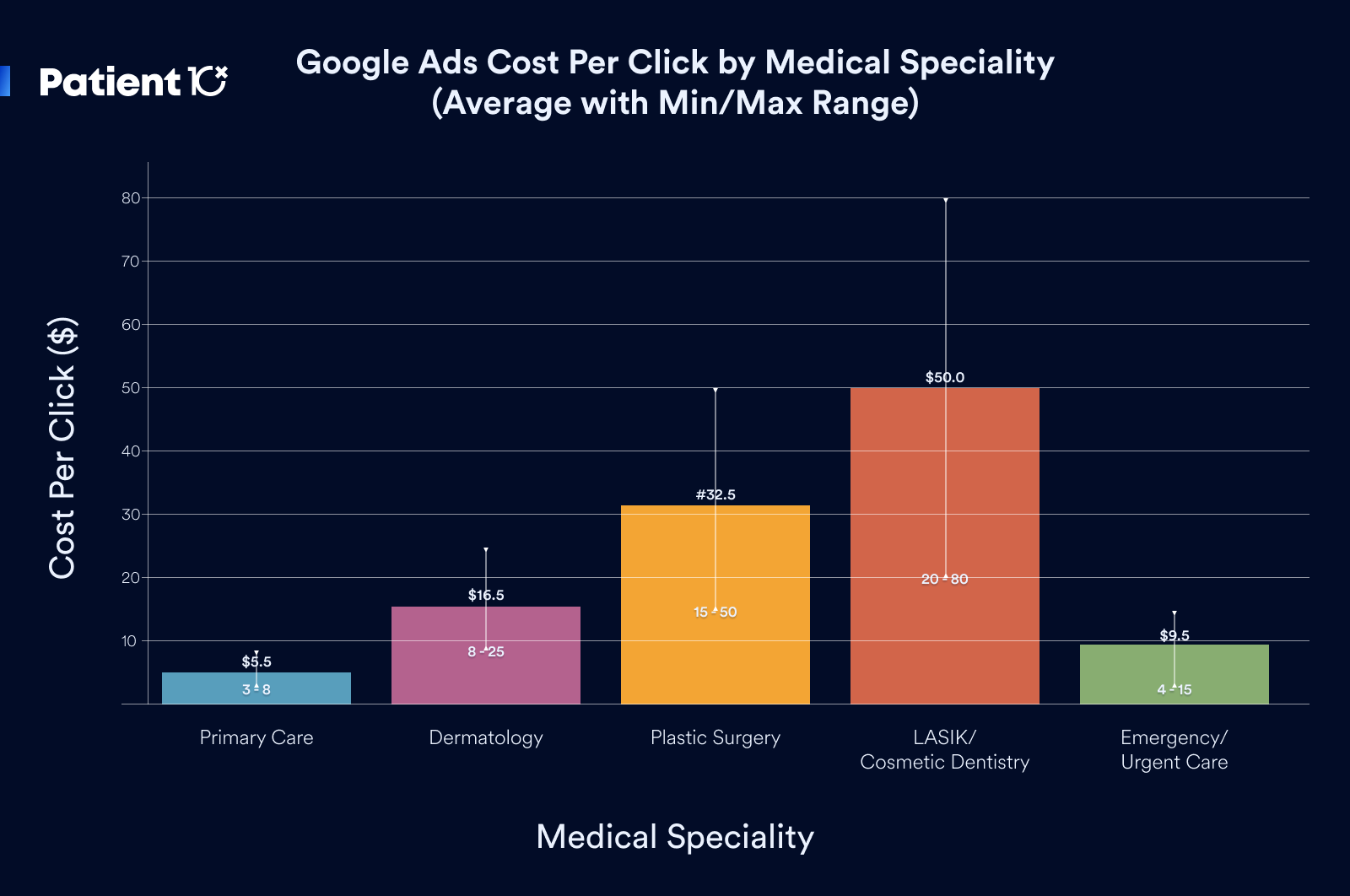
Geographic Cost Variations
Urban markets typically require 2-3x higher Google Ads investment compared to rural areas due to increased competition and higher cost of living factors that affect advertising costs. Major metropolitan areas like New York, Los Angeles, and Chicago often see healthcare advertising costs 200-400% above national averages.
Suburban markets typically fall between urban and rural costs, with advertising expenses 50-100% above rural levels but significantly below major metropolitan costs. These markets often provide optimal balance between competition levels and patient volume for many medical practices.
Rural markets offer lower advertising costs but may have limited patient volume and lower search volumes that require different strategic approaches. Rural practices often achieve better cost efficiency but may need broader geographic targeting to generate adequate patient volume.
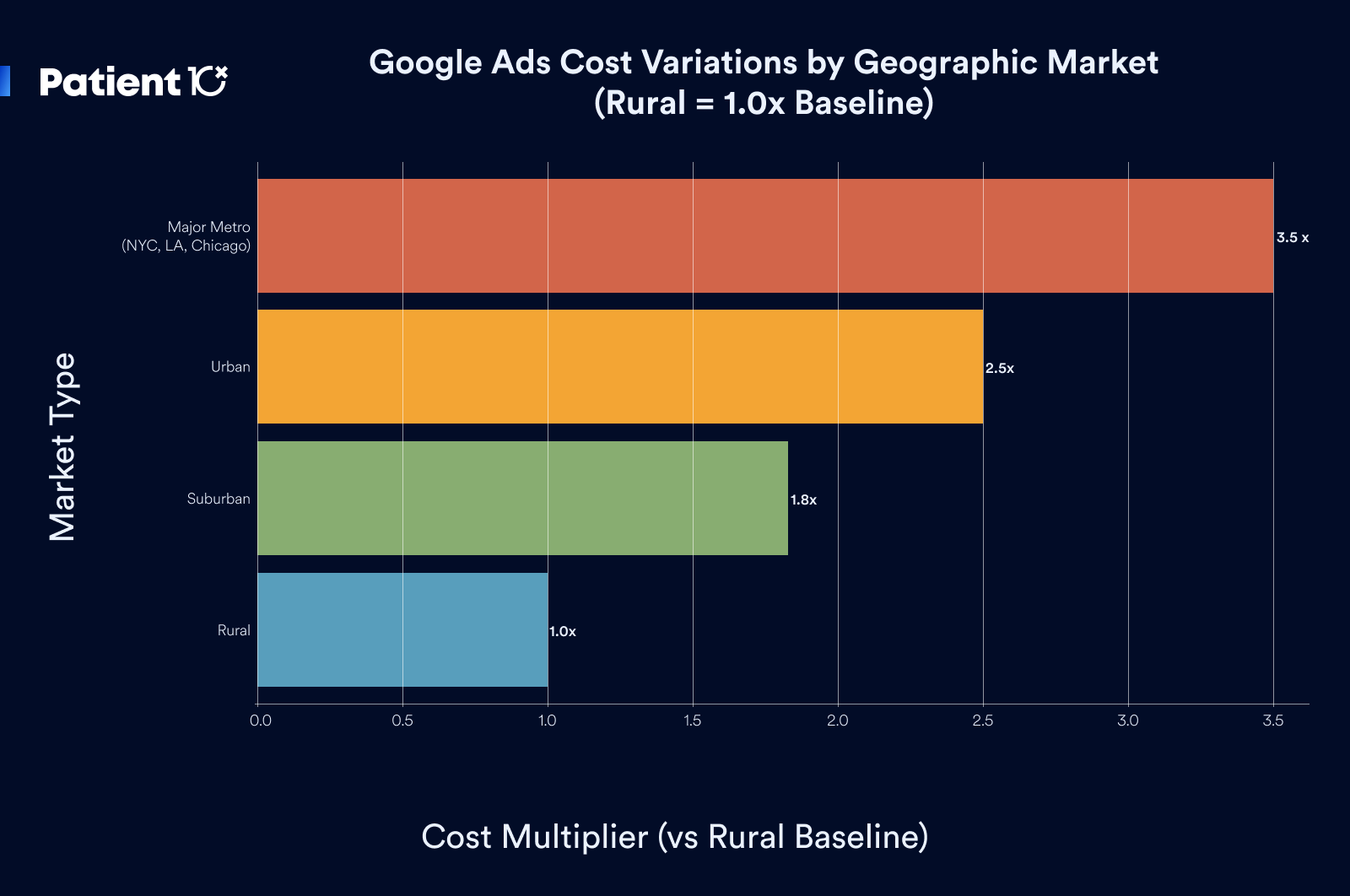
Seasonal Cost Fluctuations
Healthcare Google Ads costs typically increase 20-40% during peak healthcare decision-making periods including January (insurance changes), back-to-school periods, and pre-holiday timeframes when patients schedule elective procedures. Practices must budget for these seasonal variations to maintain consistent advertising presence.
Specialty procedures experience significant seasonal variations, with cosmetic surgery advertising costs increasing 50-100% before summer months and wedding seasons. Elective procedures often require seasonal budget adjustments to capitalize on peak demand periods while managing costs during slower periods.
Insurance enrollment periods create significant cost spikes for primary care and preventive services as patients seek new providers after insurance changes. Practices should anticipate 30-60% cost increases during open enrollment periods while preparing for increased patient volume.
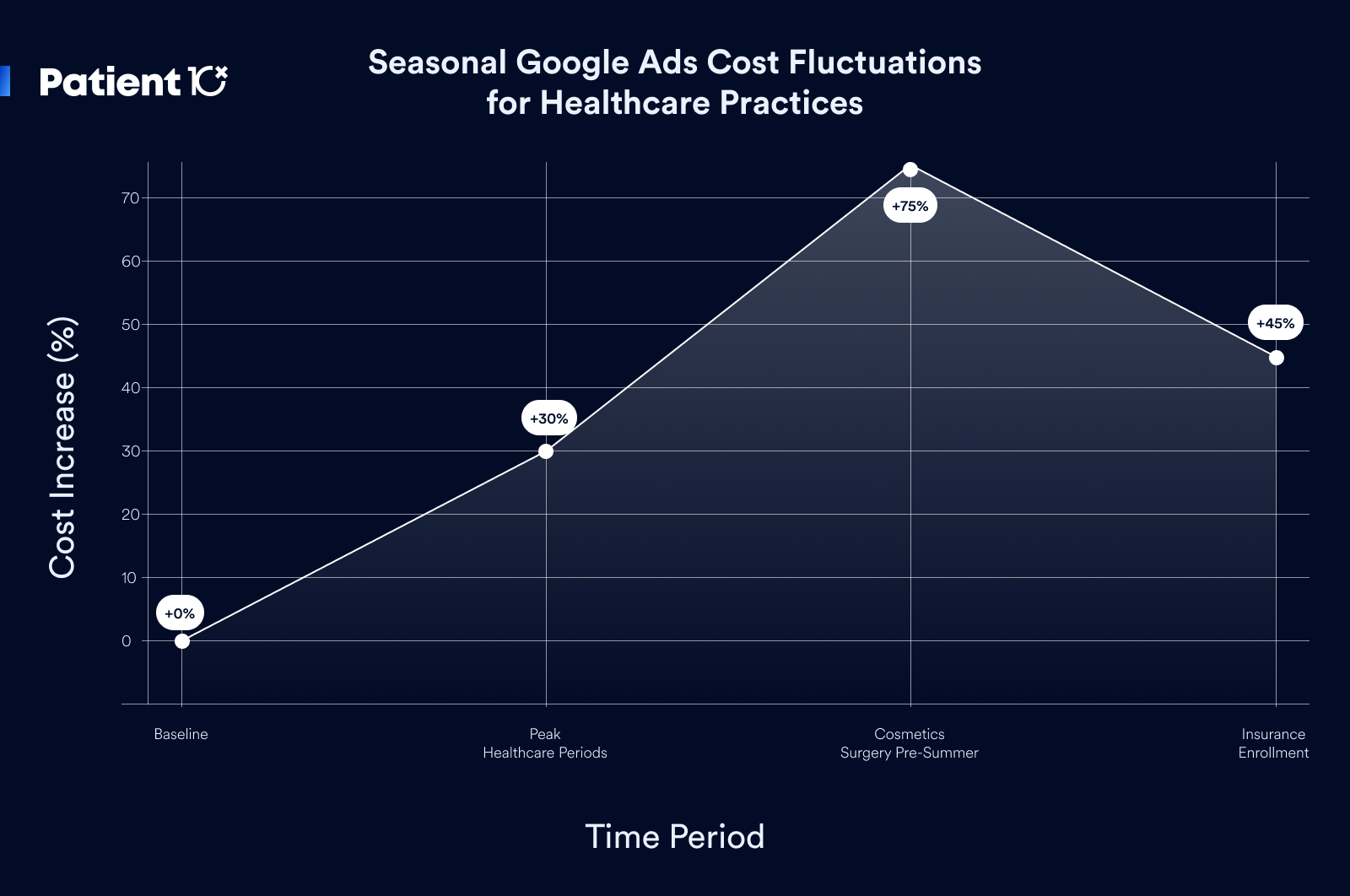
Click-Through Rates by Healthcare Specialty
Healthcare Google Ads typically achieve click-through rates of 2-6%, with primary care and urgent care often achieving higher rates (4-8%) due to immediate patient needs and local search intent. Specialty practices may experience lower click-through rates (2-4%) but often generate higher-quality clicks from more motivated patients.
Ad copy quality and relevance significantly affect click-through rates, with well-optimized healthcare ads achieving 50-100% higher click-through rates compared to generic or poorly targeted advertisements. Professional ad copy development and testing typically improve performance while reducing overall costs.
Local targeting and geographic relevance dramatically improve click-through rates for healthcare ads, with location-specific ads often achieving 2-3x higher performance compared to broad geographic targeting. Healthcare advertising success requires precise local targeting and community-specific messaging.
Conversion Rates and Patient Acquisition
Healthcare Google Ads typically convert at 3-8% from click to appointment scheduling, with urgent care and immediate needs achieving higher conversion rates (6-12%) while elective procedures may convert at lower rates (2-5%) due to extended decision-making periods.
Landing page quality and user experience significantly affect conversion rates, with optimized healthcare landing pages achieving 40-80% higher conversion rates compared to generic website pages. Professional landing page development represents essential investment for Google Ads success.
Follow-up processes and response time dramatically affect conversion rates, with immediate response generating 5-10x higher conversion rates compared to delayed follow-up. Practices must implement rapid response systems to maximize Google Ads effectiveness and return on investment.
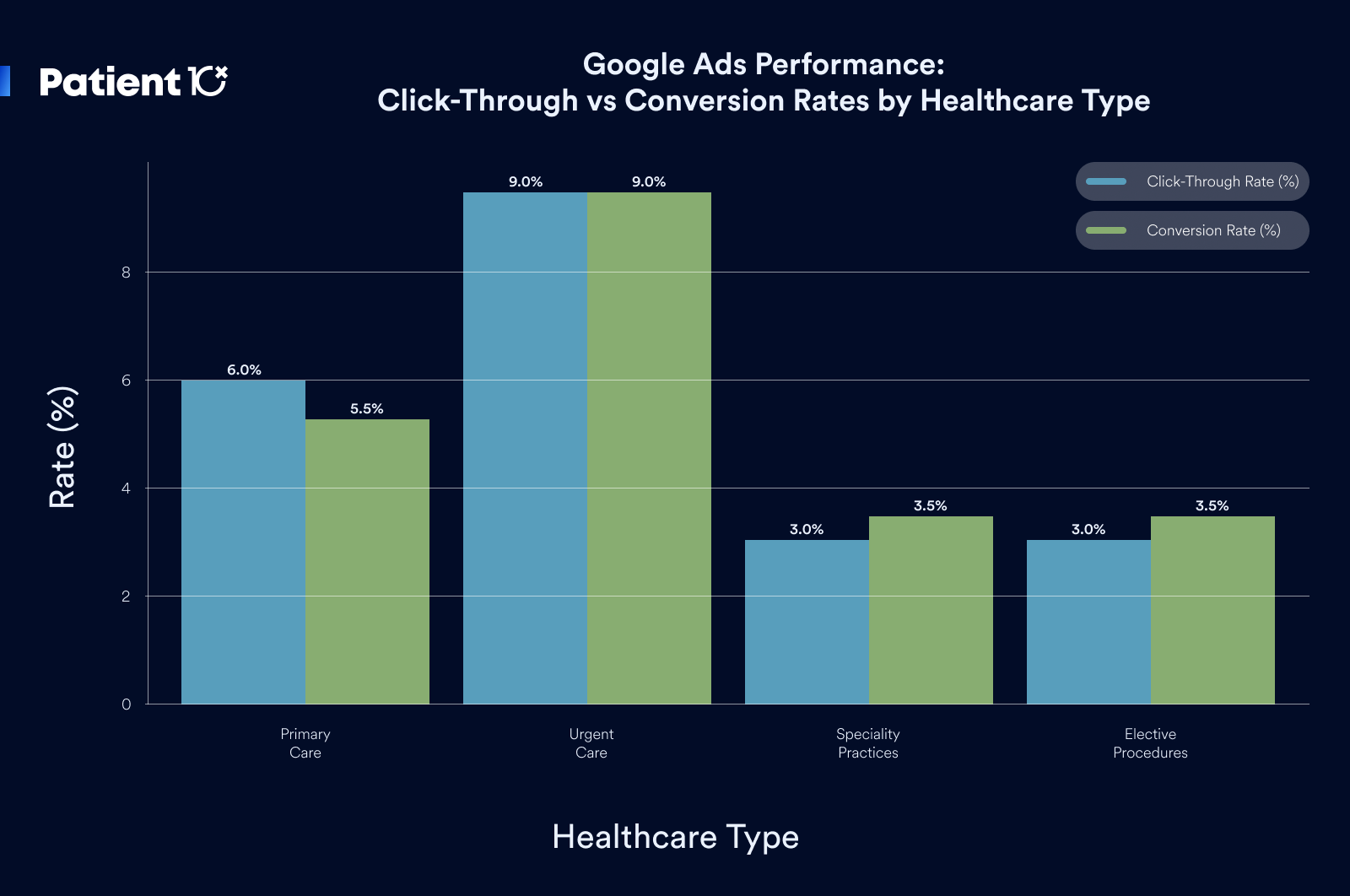
Cost Per Patient Acquisition by Specialty
Primary care practices typically achieve patient acquisition costs of $150-$400 through Google Ads, representing efficient patient acquisition for practices with strong lifetime value and ongoing patient relationships. These costs often generate positive ROI within 6-12 months through preventive care and ongoing services.
Specialty practices often experience patient acquisition costs of $300-$800 through Google Ads, justified by higher patient lifetime value and procedure revenues. Successful specialty practices focus on lifetime value rather than immediate procedure revenue when evaluating Google Ads ROI.
Elective and cosmetic procedures may require patient acquisition costs of $500-$1,500+ through Google Ads, but these costs are often justified by high procedure values and profit margins. Elective procedure practices must evaluate ROI based on procedure value rather than traditional patient lifetime value metrics.
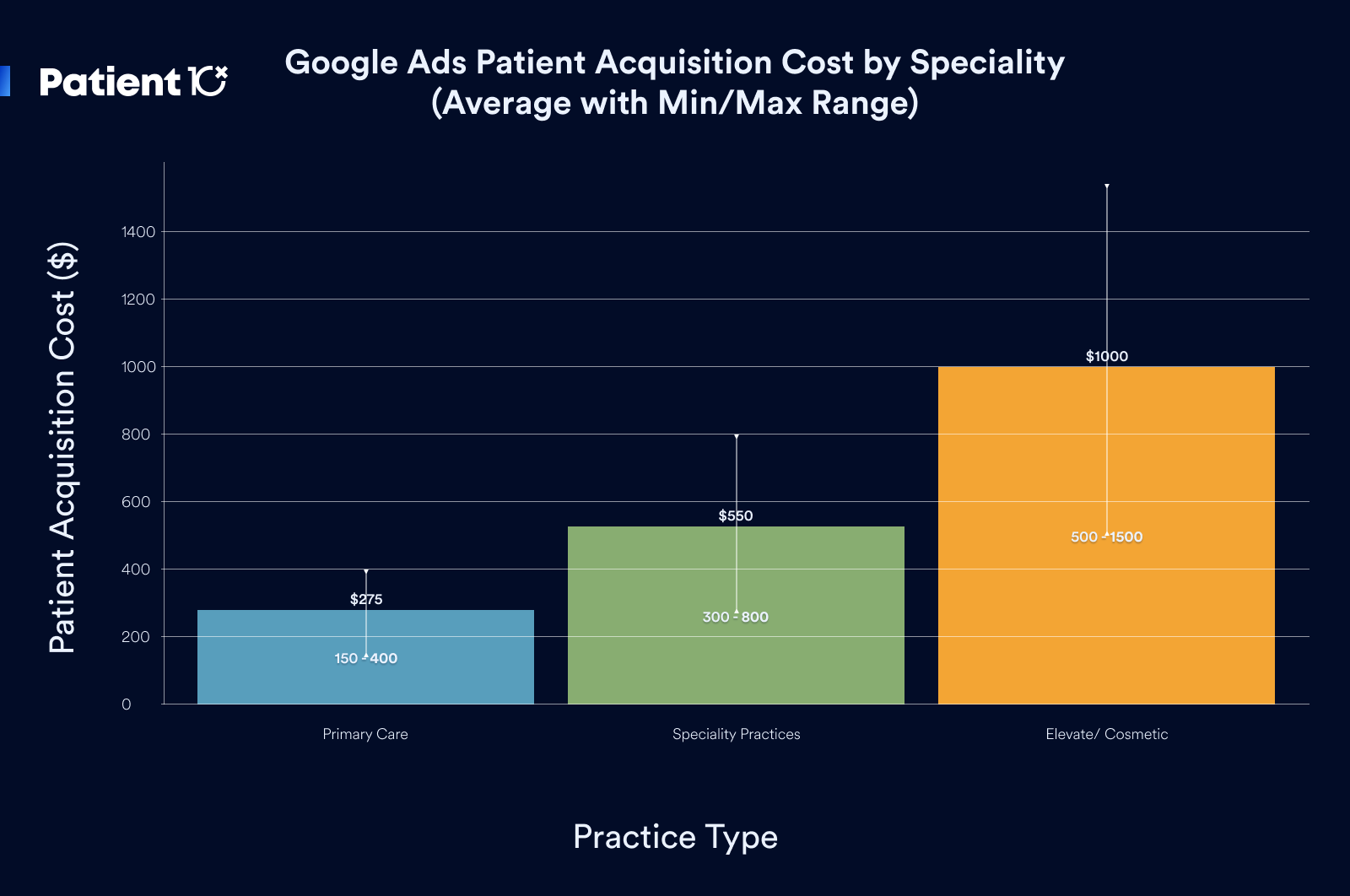
Minimum Viable Budget Requirements
Effective healthcare Google Ads campaigns typically require minimum monthly budgets of $3,000-$8,000 for primary care practices to generate adequate data for optimization while achieving meaningful patient acquisition results. Smaller budgets often fail to generate sufficient volume for effective campaign optimization and performance improvement.
Specialty practices typically require minimum monthly budgets of $5,000-$15,000 to compete effectively in higher-cost keyword markets while generating adequate patient volume. Specialty campaigns often require higher investment due to increased competition and longer optimization periods.
Competitive markets may require 2-3x higher minimum budgets to achieve meaningful results, with some urban markets requiring $10,000-$25,000+ monthly investment for effective healthcare advertising. Practices entering competitive markets must budget accordingly for higher investment requirements.
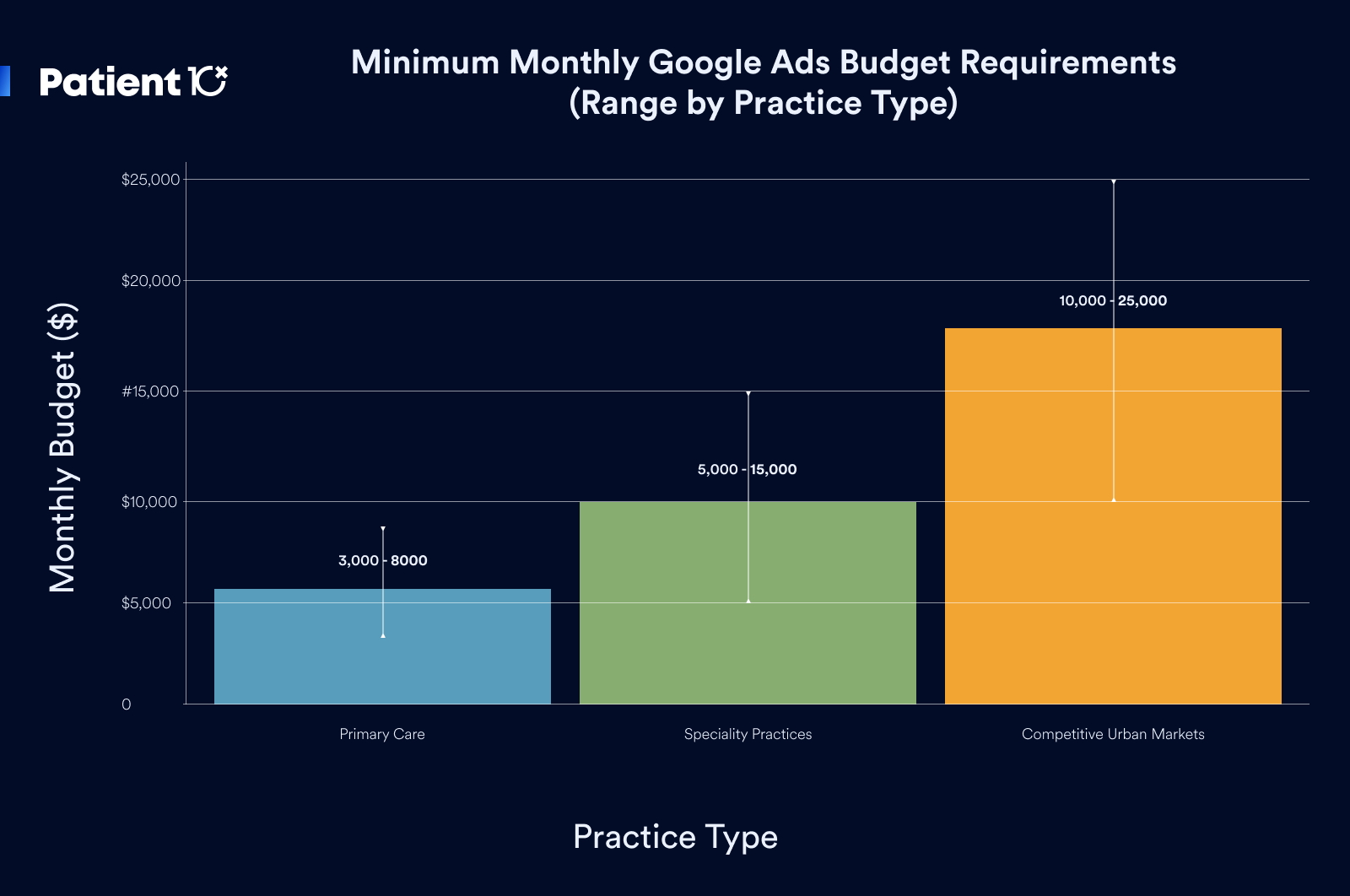
Budget Allocation Across Campaign Types
Search campaigns typically receive 60-80% of healthcare Google Ads budgets due to high intent and immediate patient needs. Search advertising generates the highest conversion rates and most immediate results for most medical practices.
Display and remarketing campaigns typically receive 15-25% of budgets to build awareness and re-engage previous website visitors. These campaigns support the extended healthcare decision-making process while building brand recognition and trust.
Local and map-based advertising typically receives 10-20% of budgets to capture location-based searches and mobile users seeking immediate healthcare services. Local campaigns particularly benefit urgent care and primary care practices serving specific geographic areas.
Scaling and Growth Investment Strategies
New practice launches typically require 150-200% of normal Google Ads budgets during the first 6-12 months to establish market presence and achieve sustainable patient acquisition. Front-loaded investment accelerates practice growth while building competitive positioning.
Market expansion requires temporary budget increases of 50-100% to achieve awareness and patient acquisition in new geographic areas or service lines. These strategic investments typically generate positive ROI within 12-18 months while expanding practice revenue potential.
Competitive response strategies may require budget increases of 25-50% to maintain market position when competitors increase their advertising investment. Defensive advertising investment protects market share while maintaining patient acquisition levels.